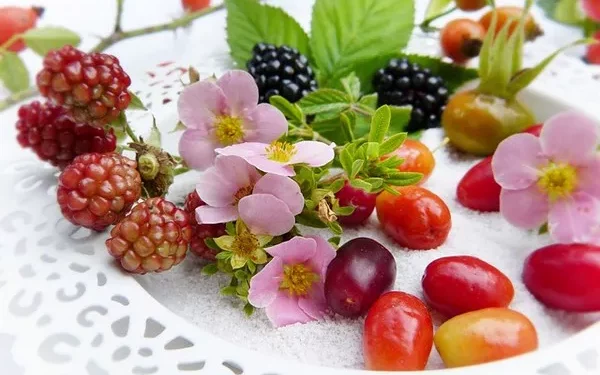Diabetes is a chronic condition that affects how the body processes glucose, and maintaining healthy blood sugar levels is crucial in managing the disease. One of the most common concerns for diabetics is how to balance nutrition while controlling their blood sugar. A key component of this is understanding which foods, including fruits, are best suited to their diet.
Fruits are generally considered a vital part of a healthy diet because they are rich in essential nutrients such as vitamins, minerals, and fiber. However, not all fruits are equally beneficial for individuals with diabetes. Many fruits, especially those that are high in sugar or have a high glycemic index (GI), can lead to rapid spikes in blood glucose levels. In this article, we will explore which fruits diabetics should be cautious about, and offer alternatives that may be more suitable for blood sugar management.
The Glycemic Index and Its Role in Diabetes Management
Before diving into specific fruits, it’s important to understand the concept of the glycemic index (GI). The GI measures how quickly a carbohydrate-containing food raises blood sugar levels. Foods with a high GI cause a rapid increase in blood glucose, while foods with a low GI have a more gradual effect.
For diabetics, consuming low-GI foods is essential for preventing blood sugar spikes. Foods like fruits, vegetables, grains, and legumes are categorized according to their GI. Low-GI fruits are digested and absorbed more slowly, preventing sharp fluctuations in blood sugar levels. On the other hand, high-GI fruits can cause quick blood sugar spikes, making them less suitable for individuals managing diabetes.
Fruits to Avoid or Limit for Diabetics
While the majority of fruits can be part of a diabetic-friendly diet, there are a few that should be avoided or limited due to their high sugar content or high glycemic index.
1. Watermelon
Watermelon is a favorite summer fruit for many, but its high glycemic index makes it a less-than-ideal choice for diabetics. Despite being low in carbohydrates, watermelon has a high GI value, meaning it can cause blood sugar levels to rise quickly. The high water content in watermelon dilutes the effect of sugar, but this does not negate the rapid increase in blood glucose levels.
For diabetics, it’s essential to be cautious with watermelon and other high-GI fruits, especially if they are consumed in large quantities.
2. Pineapple
Pineapple is another tropical fruit that can cause a significant spike in blood sugar levels. While it’s rich in vitamins and minerals, particularly vitamin C, it has a high glycemic index, which means it can lead to rapid increases in blood glucose. Although it contains fiber and antioxidants, the high sugar content outweighs the benefits for diabetics.
If you’re craving something sweet and tropical, consider opting for smaller portions of pineapple and pair it with a protein or healthy fat to help mitigate the blood sugar spike.
3. Bananas (Ripe)
Bananas are often considered a healthy fruit due to their potassium and fiber content. However, ripe bananas are relatively high in sugar and have a moderate to high glycemic index. The riper the banana, the higher its sugar content. For diabetics, consuming a whole ripe banana can cause a spike in blood sugar.
To avoid this, you can opt for green or slightly unripe bananas, which have a lower glycemic index. Additionally, bananas can be paired with other foods that help balance their glycemic impact, such as nuts or seeds.
4. Mangoes
Mangoes are delicious, tropical fruits that many people enjoy. However, they are high in sugar and have a high glycemic index, making them a poor choice for diabetics who are trying to maintain stable blood sugar levels. Mangoes are also high in carbs, which can contribute to insulin resistance if consumed in excess.
If you enjoy mangoes, it’s best to consume them in moderation and combine them with foods that have a low glycemic index to help balance their sugar impact.
5. Grapes
Grapes are high in natural sugars, and they also have a moderate to high glycemic index. While they contain beneficial antioxidants, such as resveratrol, the sugar content can cause a rapid spike in blood glucose levels. This makes grapes less suitable for diabetics, especially when eaten in large quantities.
One option for diabetics is to limit the intake of grapes and opt for smaller portions. Alternatively, frozen grapes can provide a satisfying, sweet treat without overindulging.
6. Figs (Fresh)
Figs are nutrient-dense fruits packed with fiber, antioxidants, and minerals like calcium. However, fresh figs are also relatively high in sugar, which can lead to a spike in blood glucose levels. While dried figs have an even higher concentration of sugar, fresh figs still have a significant glycemic impact.
Diabetics should limit their intake of figs or consider opting for dried figs in smaller portions as part of a balanced meal.
7. Cherries
Cherries are rich in antioxidants and have anti-inflammatory properties, but they also contain sugar and have a high glycemic index. When consumed in large quantities, they can lead to rapid spikes in blood sugar levels. However, cherries in moderation can still be part of a diabetic-friendly diet, as long as they are balanced with other low-GI foods.
8. Apples (Juiced or Processed)
While whole apples have a moderate glycemic index, the processed form of apples, especially apple juice, can be problematic for diabetics. Apple juice, like many other fruit juices, has a higher glycemic index and can cause blood sugar spikes due to the lack of fiber. Whole apples contain fiber, which helps slow the absorption of sugar, but once processed, much of the beneficial fiber is lost.
Diabetics should avoid apple juice and consume whole apples in moderation to ensure better blood sugar control.
Fruits to Include in a Diabetes-Friendly Diet
Although some fruits may need to be avoided or consumed in moderation, there are plenty of fruits that diabetics can enjoy without compromising blood sugar control. These fruits typically have a low glycemic index and provide essential nutrients.
1. Berries (Strawberries, Blueberries, Raspberries)
Berries are a great choice for diabetics due to their low glycemic index and high antioxidant content. They are rich in fiber, vitamin C, and manganese, and their low sugar content helps minimize blood sugar spikes. Berries are also high in flavonoids, which have been shown to have anti-inflammatory and anti-diabetic effects.
2. Apples (Whole)
Whole apples, especially those with a lower sugar content like Granny Smith apples, are an excellent fruit choice for diabetics. They contain fiber, which helps regulate blood sugar levels and promote digestive health. Apples also provide a slow release of energy, making them a good option for maintaining stable blood sugar.
3. Pears
Pears are a good source of dietary fiber, vitamins, and antioxidants. They have a low glycemic index, which means they have a slower impact on blood glucose levels. Pears are also rich in potassium and vitamin C, contributing to overall heart health and immune function.
4. Peaches
Peaches are a juicy and delicious fruit that provides vitamins A and C, as well as fiber. They have a relatively low glycemic index and can be consumed in moderation as part of a diabetes-friendly diet. Fresh peaches, rather than canned or processed varieties, are the best choice for diabetics.
5. Plums
Plums are another low-GI fruit that can be beneficial for diabetics. They are rich in fiber and antioxidants, which can help manage blood sugar levels and support heart health. Plums also have a moderate sugar content, but they have a low glycemic impact, making them a safe option in moderation.
6. Kiwi
Kiwi is a nutrient-dense fruit that has a low glycemic index. It’s rich in vitamin C, vitamin K, and fiber, and it also contains antioxidants that can help reduce inflammation and oxidative stress. The fiber in kiwi helps slow down the digestion and absorption of sugars, making it a good choice for diabetics.
Conclusion
Managing diabetes requires careful attention to diet and understanding how different foods affect blood sugar levels. While fruits are an important part of a healthy diet, it’s crucial for diabetics to choose fruits that have a low glycemic index and are low in sugar. Fruits like watermelon, pineapple, bananas, and mangoes can cause rapid increases in blood sugar and should be consumed sparingly. On the other hand, berries, apples, pears, and kiwi are better options for maintaining stable blood sugar levels.
By understanding the glycemic index of various fruits and selecting those that are more suitable for diabetes management, individuals with diabetes can continue to enjoy the nutritional benefits of fruits while keeping their blood sugar under control. Always remember to consult with a healthcare provider or nutritionist for personalized dietary recommendations tailored to individual needs.
Related topics:
How Much Fruit Can a Diabetic Have Per Day?



























